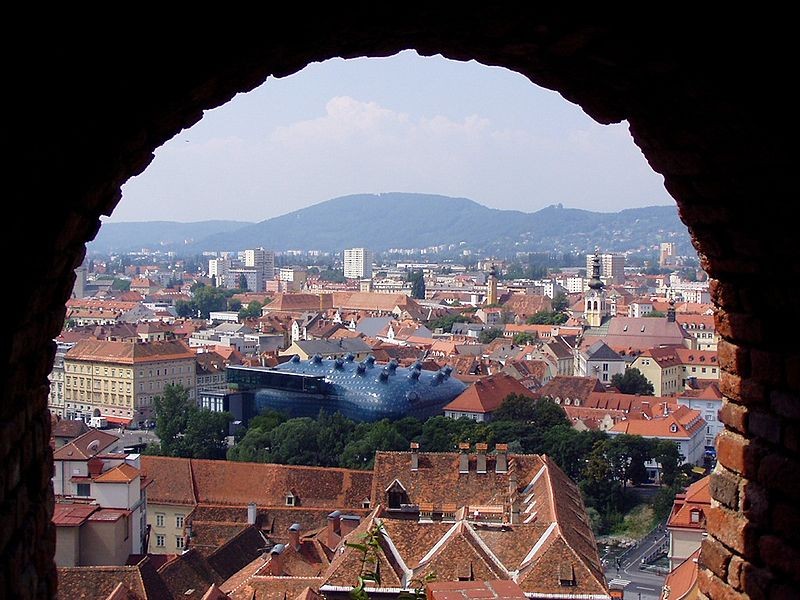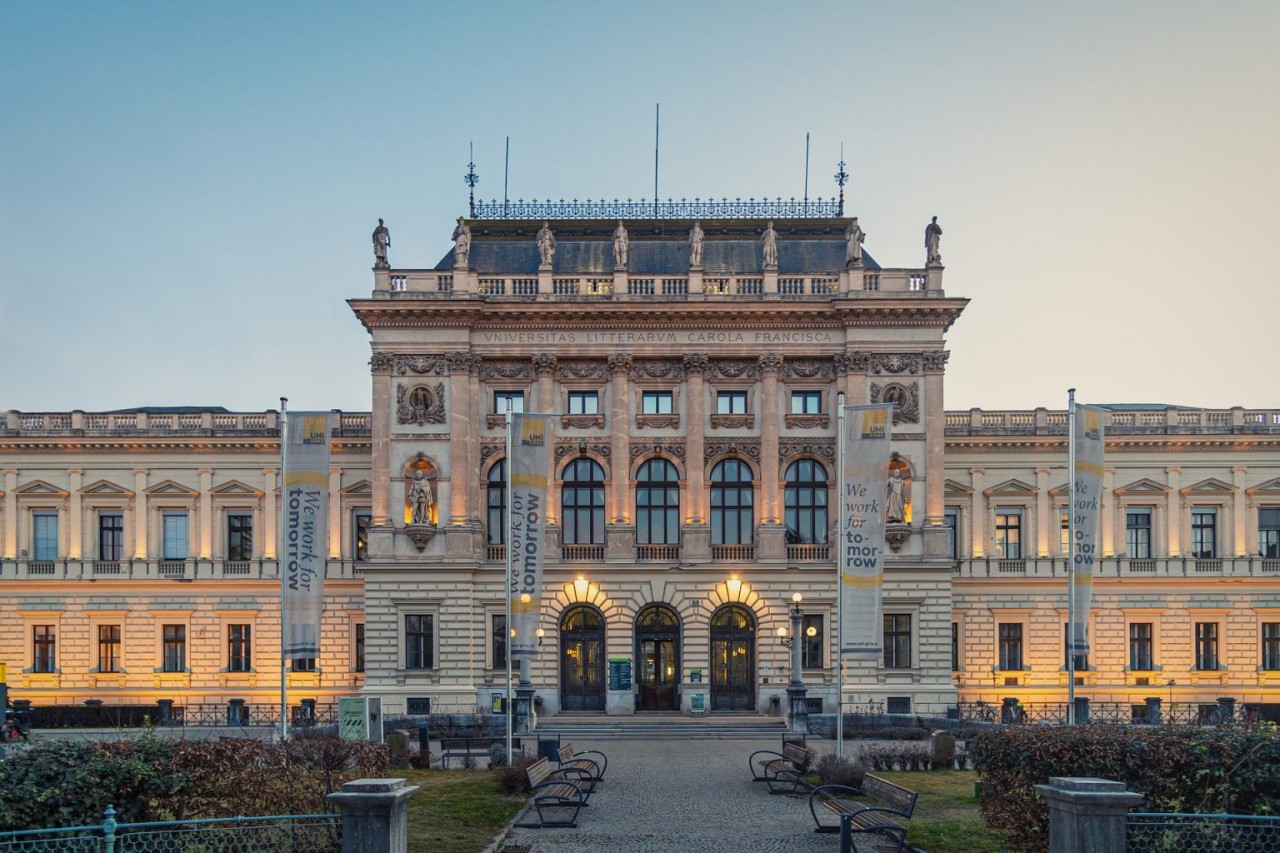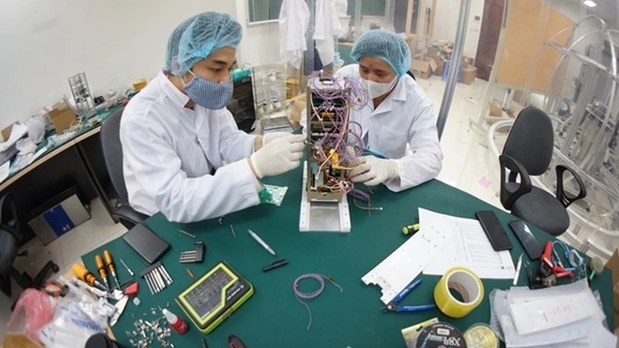
Styria: The Austria’s center of industry, research and development
Latest
 |
| Graz is Styria's capital and the second largest city in Austria. (Photo: wikipedia) |
Located in the South East of Austria, Styria shares its border with Slovenia as well as the federal states of Carinthia, Salzburg, Upper Austria, Lower Austria and Burgenland. Graz is Styria's capital and the second largest city in Austria.
Styria is Austria's leading state in terms of research and development (R&D), striking with innovative products and services. This dynamism is based on Styria’s high-powered educational system, the research community, the business environment and its residents. Moreover, the knowledge and technology’s transfer is the region’s core competence and success story: most Austria’s competence centres conduct their research and other work in Styria, university spin-offs are part of the daily routine, and independent research institutions are always open for businesses.
Diverse economy
In 2018, Styria’s GDP reached EUR 47.2 billion, having increased by 2.1% and accounted for 12.9% of the national GDP. GDP per capita in terms of purchasing power parity (PPP) reached 35,400 EUR, 17% higher than the EU27’s average.
Styria is one of the five Austrian regions having a positive balance of trade. The regional exports represent 16.97% of the national exports which ranks Styria at the second position behind Upper Austria. The imports in Styria represent 12.37% of the total national imports and ranks the region in the middle of the Austrian regions.
In 2019, the unemployment rate in Styria was below the national average with 3.2% against 4.5% and below the European average (6.3%). The state's workforce counted 632,800 people, i.e. 13.93% of the national total. Of all jobs in the region, 29.3% were in the industry sector; 5.2% in forestry and agriculture; and 65.4% in the service sector. These rates indicate a focus on the agriculture and industry sectors when compared to the national rates (agriculture: 3.5%; industry: 25.4%; services: 71.1%). In 2019, Styria’s share in Austria’s total industrial production totalled 16%.
In 2016, there were 31,911 firms in Styria, of which 81.8% had one to nine employees and 18.2% had more than ten employees. These rates are very similar to the national average ones (81.4% and 18.6%).
In terms of agriculture, Styria's main products are pumpkins (17,000 ha), apples (5,200 ha), and wine grapes (4,500 ha).
 |
| Pumpkin is one of the main agricultural products of Styria. (Photo: Styrianpumpkin) |
Notwithstanding the relative importance of its agricultural sector, Styria's economic sector has undergone significant structural changes over the past decades, heading towards a more diversified industry and services landscape. Until the late 1980s, the iron and steel industry, as well as the automotive industry were the dominant economic branches. However, these sectors suffered from a dramatic decline during the 1990s. Only the latter sector (automotive suppliers) has fully recovered and regained international visibility.
Major industries nowadays include the automotive industry, mechanical engineering, electronics, and paper. The state's large multinational enterprises include Andritz AG (providing machinery, building factories for hydroelectricity, pulp and paper, steel and metallurgy, automation, etc), voestalpine Metal Engineering Division, and Magna Steyr Fahrzeugtechnik AG & Co.KG.
Styria features an important automotive cluster, "ACstyria", which is located around Graz and incorporates more than 250 component suppliers, a central cluster actor being Magna. Another prominent cluster is for example "ECO WORLD STYRIA", which comprises more than 170 enterprises from the field of environmental technology.
Recently, the Silicon Alps Cluster has begun its activities in Styria and its main focus is on technology and innovation for electronic-based systems.
Focusing and flexible development policies
The key elements of Styria's new economic structure are high-quality "niche" products, special solutions and complex industrial services, with an emphasis on "knowledge-based manufacturing".
Styria regards the IT sector as a pillar supporting other industries’ growth, whose development is thanks to information platforms connecting online trade and capital, such as “AC Styria Business Lounge Industrie 4.0”.
The state government has developed the Future of Styria Fund to support and fund new projects, from which over 300 projects have benefited up to now.
In 2018, the Styrian government enacted the State and Regional Development Act, which aims to engage citizens in key state missions; better manage the people’s needs and compliance with national policies, especially on finance, in order to better allocate resources and promote further state's development.
Recently, the Styrian government has adopted the “Vision 2030+” policy, focusing on organizing events and soliciting direct public input, to design a specific development strategy in the coming decades.
The policy covers a number of leading topics such as knowledge and training; mobility of the future; resource management, climate and environmental protection; security and connectivity; settlement development; place of business and work; digitizing.
 |
| The University of Graz isthe second-largest and second-oldest university in Austria. (Photo: Neosmart) |
Leading in research and development
Styria can be characterised as one of Europe's leading regions in terms of overall RTDI intensity, both in comparison to other Austrian federal states as well as to other countries. Its R&D intensity of 4.88% sets it among the most intensively innovative regions of Europe.
In 2017, R&D expenditures totalled EUR 2.3 billion - a sum amounting to 4.88% of regional GDP that year. Styrian companies stood for 74% of regional R&D expenditures. The remaining 22% of the regional R&D expenditure was done by the higher education branch. In 2015, the human resources in R&D achieved 11,345 people full-time employed in the business sector and 3,556 people in the higher education sector.
In 2017, 3.5% of total employments were in high-technology manufacturing sectors and in knowledge-intensive high-technology sectors (Eurostat, 2020). It places Styria third tied with Bungerland and after Carinthia (4.7%), Lower Austria (3.2%).
In 2015, human resources in the field of R&D reached 11.345 people working full-time in business and 3.556 people in higher education.
The overall research infrastructure in Styria is strong by national standards and features five universities (four thereof located in the city of Graz), two universities of applied sciences and two pedagogic higher education institutions with more than 61,000 students.
| Cooperation between the Austrian state of Styria and Viet Nam Many Styria's large enterprises have successfully cooperated with Viet Nam in the fields of energy and industry. Andritz Group has successfully participated in many key hydropower projects in Viet Nam. Magna Steyr and AVL List participated in the design of VinFast cars. The Free Trade Agreement between Viet Nam and the European Union (EVFTA) took effect on August 1, 2020 paving the way for increasing economic ties between Viet Nam and Styria. In the coming time, the two sides can explore cooperation opportunities in areas such as training and research, tourism and culture, etc. For more details, you can contact the Embassy of Viet Nam in Austria (email: at@moit.gov.vn, mission@vietnamembassy.at). |

| Viet Nam seeks new cooperation opportunities with Austria Vietnamese Ambassador to Austria Nguyen Trung Kien has recently visited Styria, the second largest state of the European nation, to seek new cooperation opportunities between ... |

| Viet Nam, Austria look to beef up friendly relations The Viet Nam-Austria relations have been consolidated and developed continuously despite effects of the COVID-19 pandemic, said Vietnamese Ambassador to Austria and permanent representative of ... |

| Processing industry makes up over 86 percent of total export revenue in nine months The processing industry contributed 86.27 percent to the total export revenue of the country in the first nine months of 2021, according to the Ministry ... |

| Viet Nam wants to deepen ties with Austria: Prime Minister Pham Minh Chinh Prime Minister Pham Minh Chinh on September 16 held talks on the phone with Chancellor of Austria Sebastian Kurz, during which he affirmed that Viet ... |























